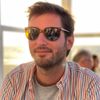Geneva in July, on film
I visited my dad in Geneva in mid July 2022. I brought film and a Leica CL fitted with an LTM Canon 50mm f1.4.

I visited my dad in Geneva in mid July 2022. I brought film and a Leica CL fitted with an LTM Canon 50mm f1.4.
The first impression that stuck with me when taking a look at the negatives was the quality of the lens even in low light settings, in a dim-lighted museum, Ilford FP4 rated at ISO 125, and the small rangefinder base of the CL.
Black and white negatives are not very dense as I am still learning how to meter for it using the spot cell of the CL and the zone system. Some shots were more lucky than other though, such as this shot of the staircase of the Hôtel de Ville, near one the oldest house in Geneva (you can visit it and learn more about the history of the city):
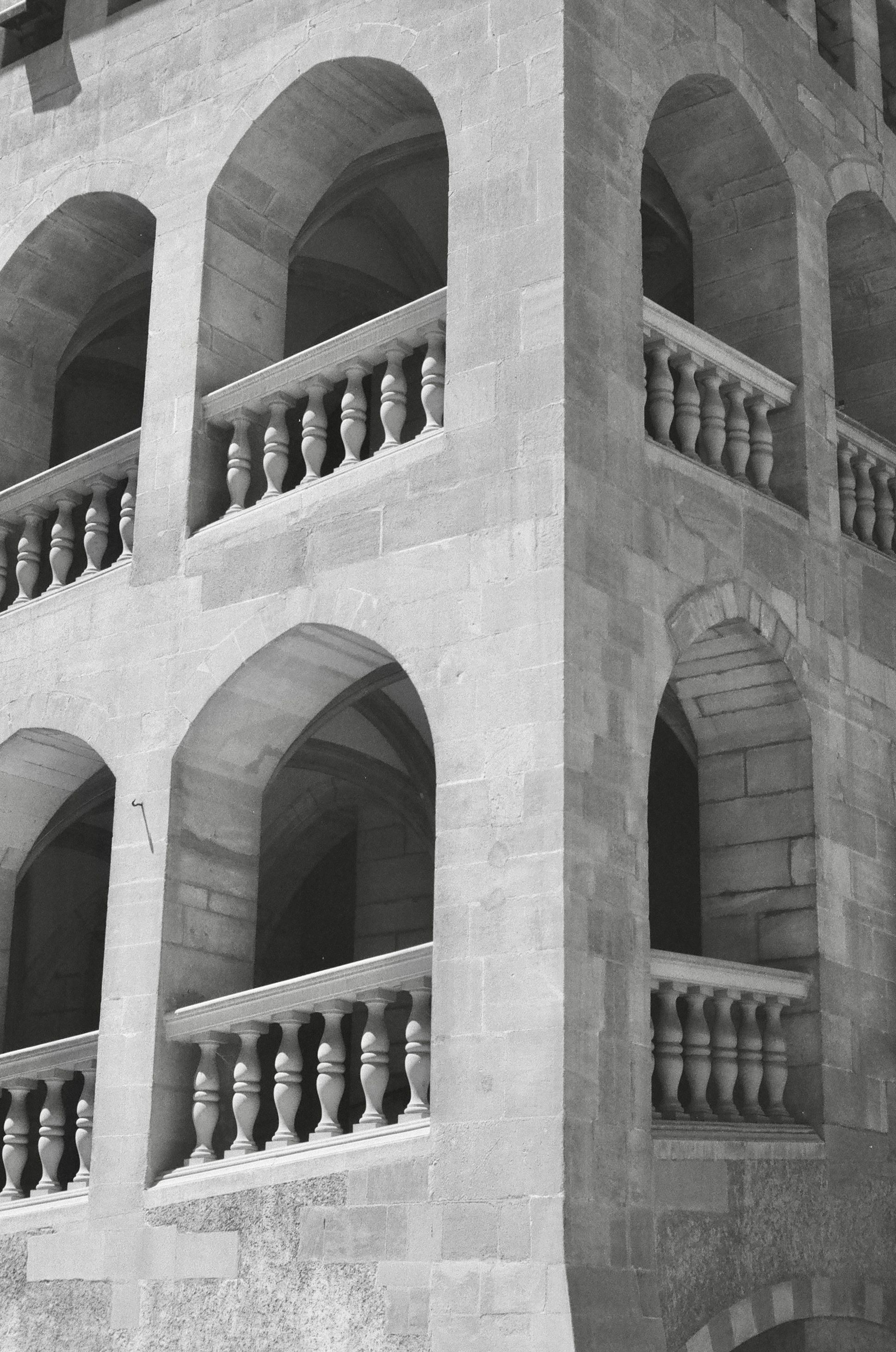
The negative density seemed quite good to me out of the box! Highlights are not blown out, shadows remain good, with deep, detailed blacks.
Credits to the light cell of the Minolta CL, which is quite precise although it has a tendency to overexpose (as we will discover below). It’s a spot meter and if I recall correctly I metered for the shadows under the arches, while trying to make sure that the highlights would not get burned and stay "in range".
I had less luck with the following frame as you can see for yourself, which is much less dense, and overexposed by at least 1 stop in my opinion. See how all detail is gone from the overexposed floor. Stopping down one would probably have resulted in a more balanced negative.
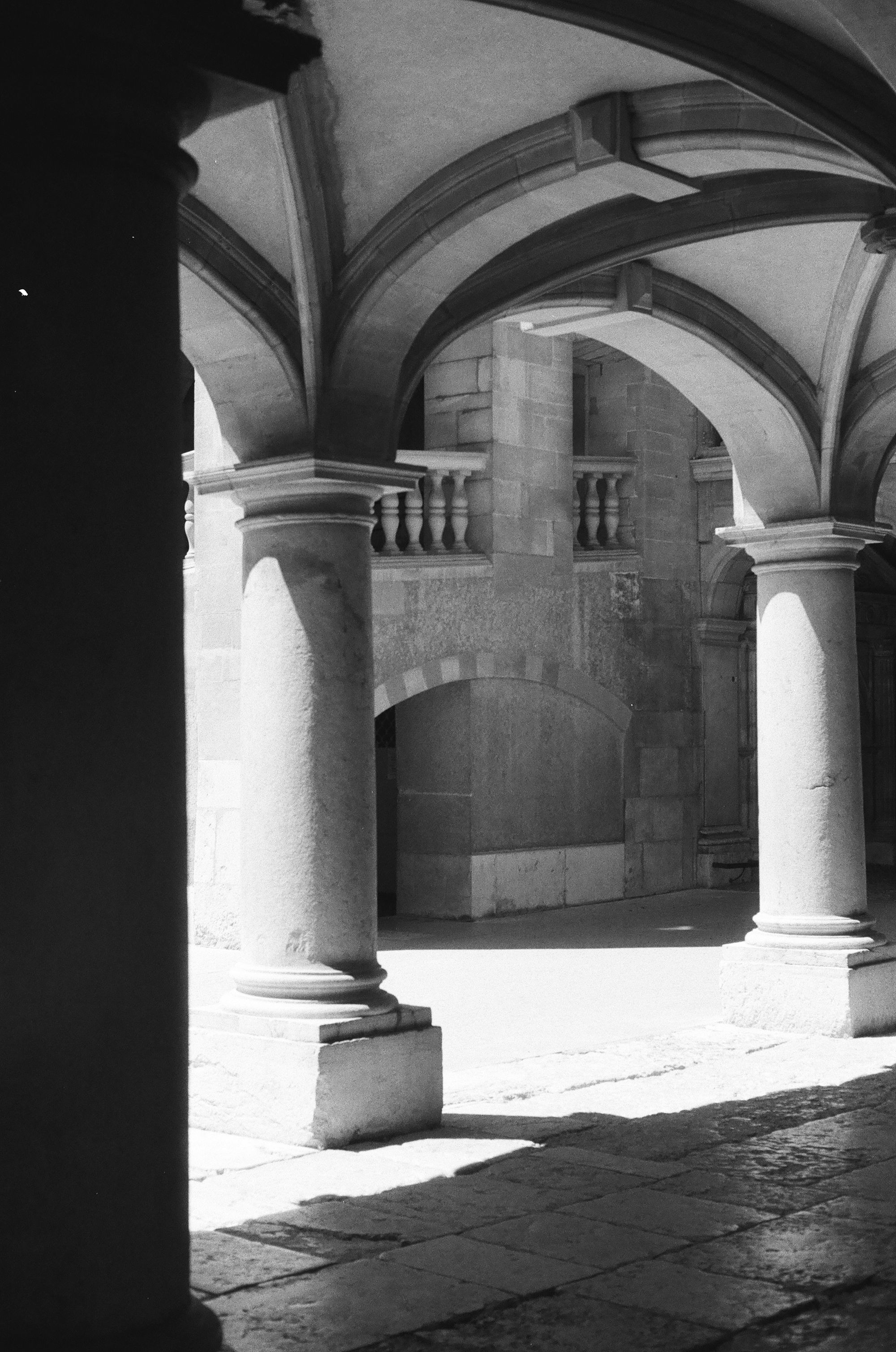
Left on my own for a full day I took the opportunity to explore the city a little bit further, stopping by the botanical garden on the west bank of the Léman. I recommend the visit if you like greenhouses and flowers (it’s free). Take the mouette (the little public transit boats) to cross the lake and snap a few shots on the water!
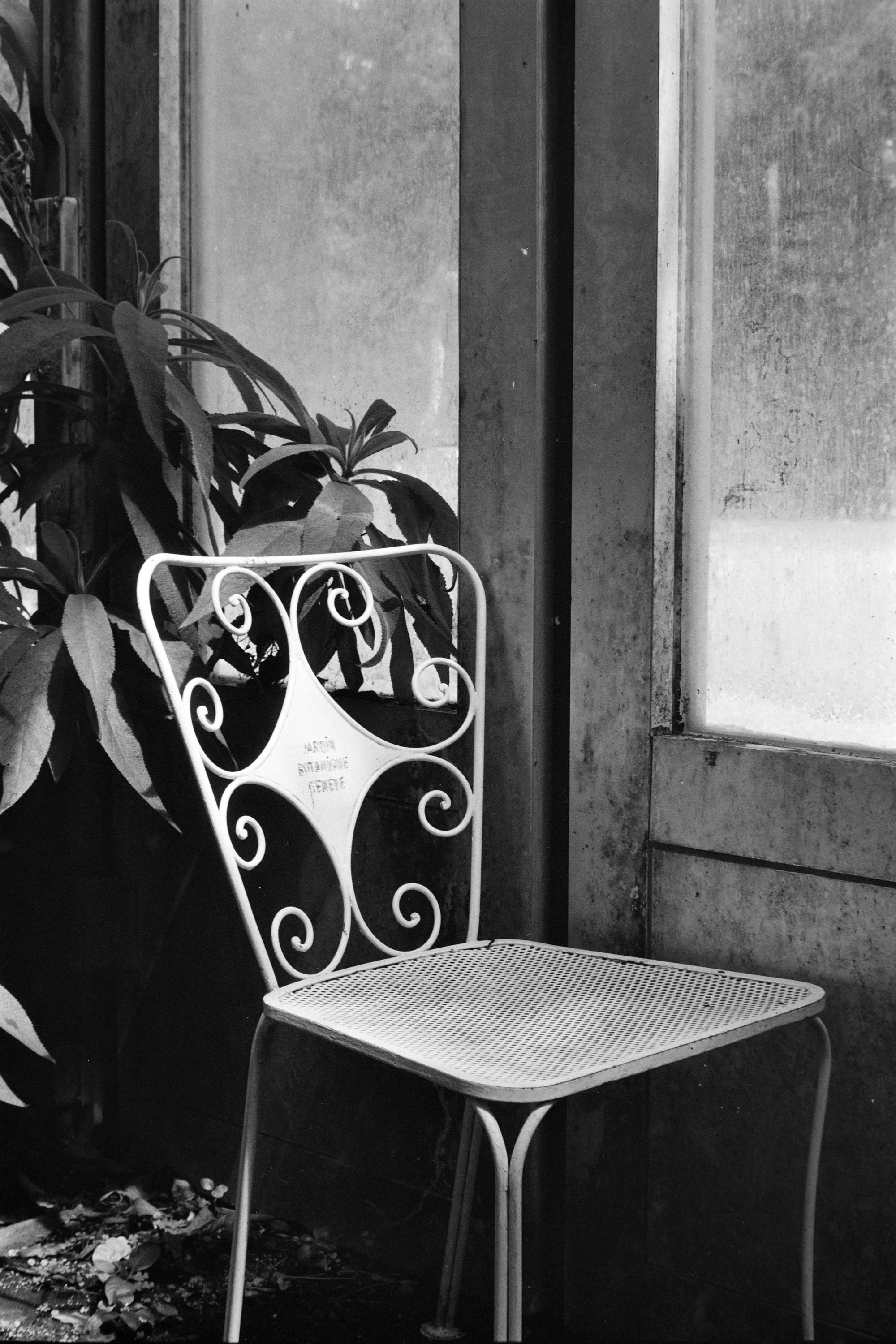
There again I feel that the light meter of the CL can give excellent readings, if you know how to use it correctly (which I don’t yet). For instance here I think a stop less would have helped as the chair’s back lost much detail (the writing is almost undecipherable: it should read "Jardin Botanique Genève"). That being said, the shadows behind it look stuffy and lack detail too.
Maybe I’m starting to see what Hans de Graaf explains in this video, and the sorceries of overexposing shadows in conjunction with underdevelopment (around the 30 minutes mark) to produce incredible images with good level of details in the shadows and in the highlights. He explained he got these results by shooting HP5 at ISO 65 and cutting developing time by half! Interesting.
Same story here with the picture below. I think this one is rather underexposed. I think I metered for the leaf, which as a result turned out middle grey-ish. I quite like the veiny details between the ribs of the leaf, and the highlight on the right ridge at the top of the leaf.
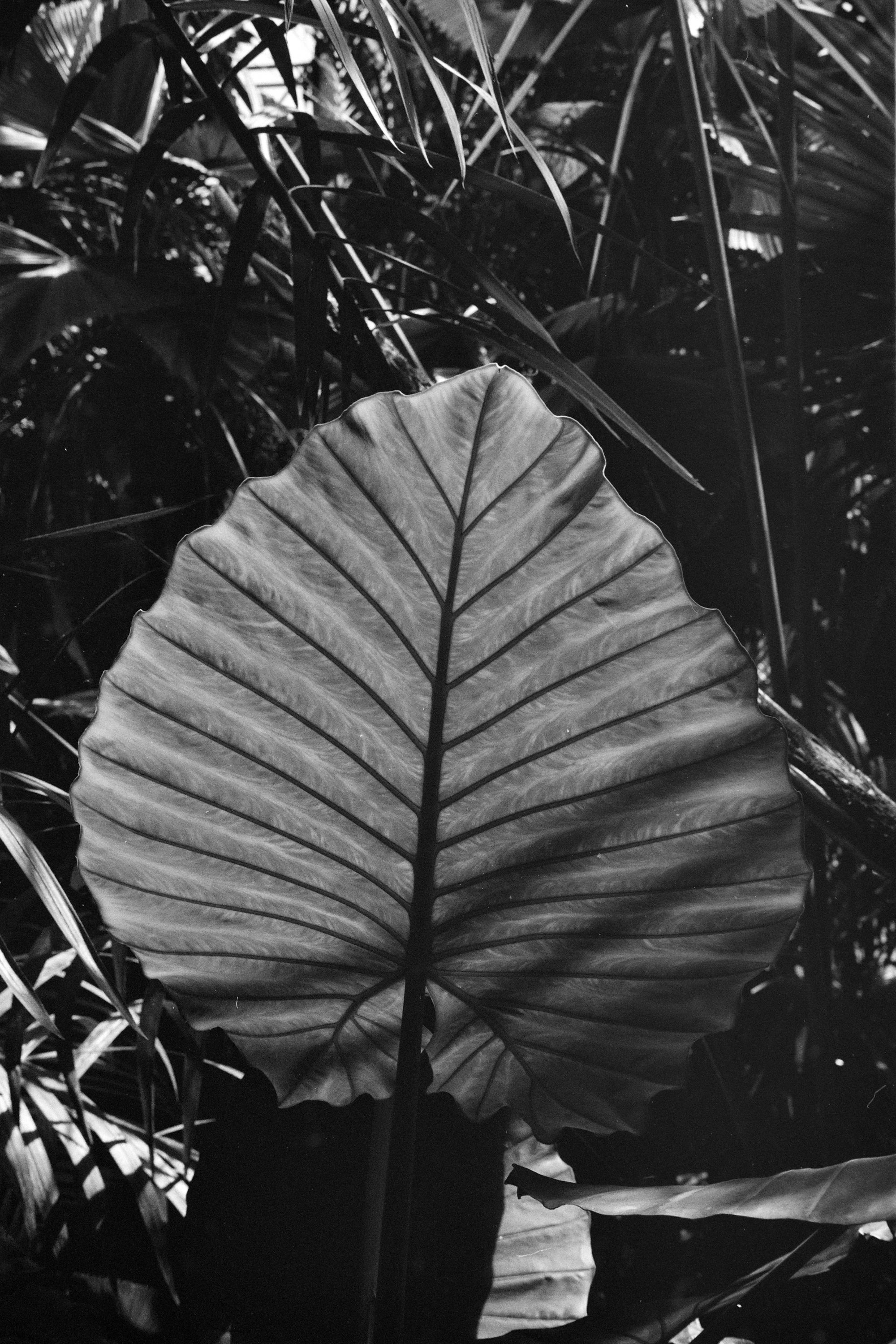
Right about that time I finished the roll of FP4+ and switched to color (an old Portra 160 I had lying around I think). Some shots were nice but they turned out to be tricky to take outside, with contrast issues, and a tad overexposed to my (still in training) eyes. Although that first cactus is a bit too much on the dark side, so …


I also took the opportunity to visit Gruyère again, and check out the H.R. Giger museum. Inside the museum I found the lighting to be dim, which made sense given Giger’s body of work, but proved challenging for the CL’s small rangefinder base when the aperture is fully open and the depth of field shallow.
I took utmost care to stay as still as I could to maintain focus where I wanted it to be. The depth of field at f1.4 is shallow, and even with a lens close focus distance of about 1m (3 feet), leaning in your picture just before the exposure can give you strong backfocus.

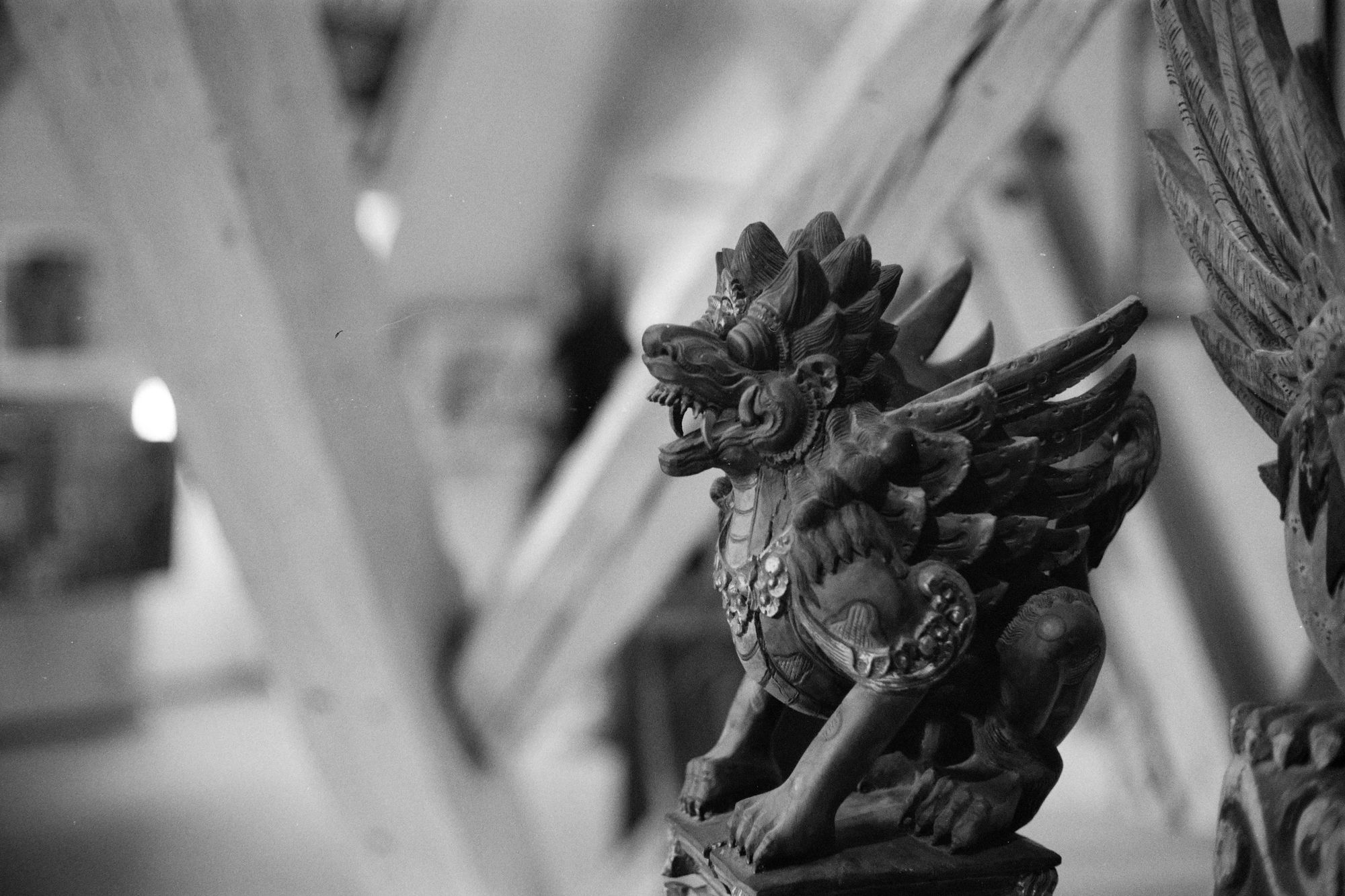
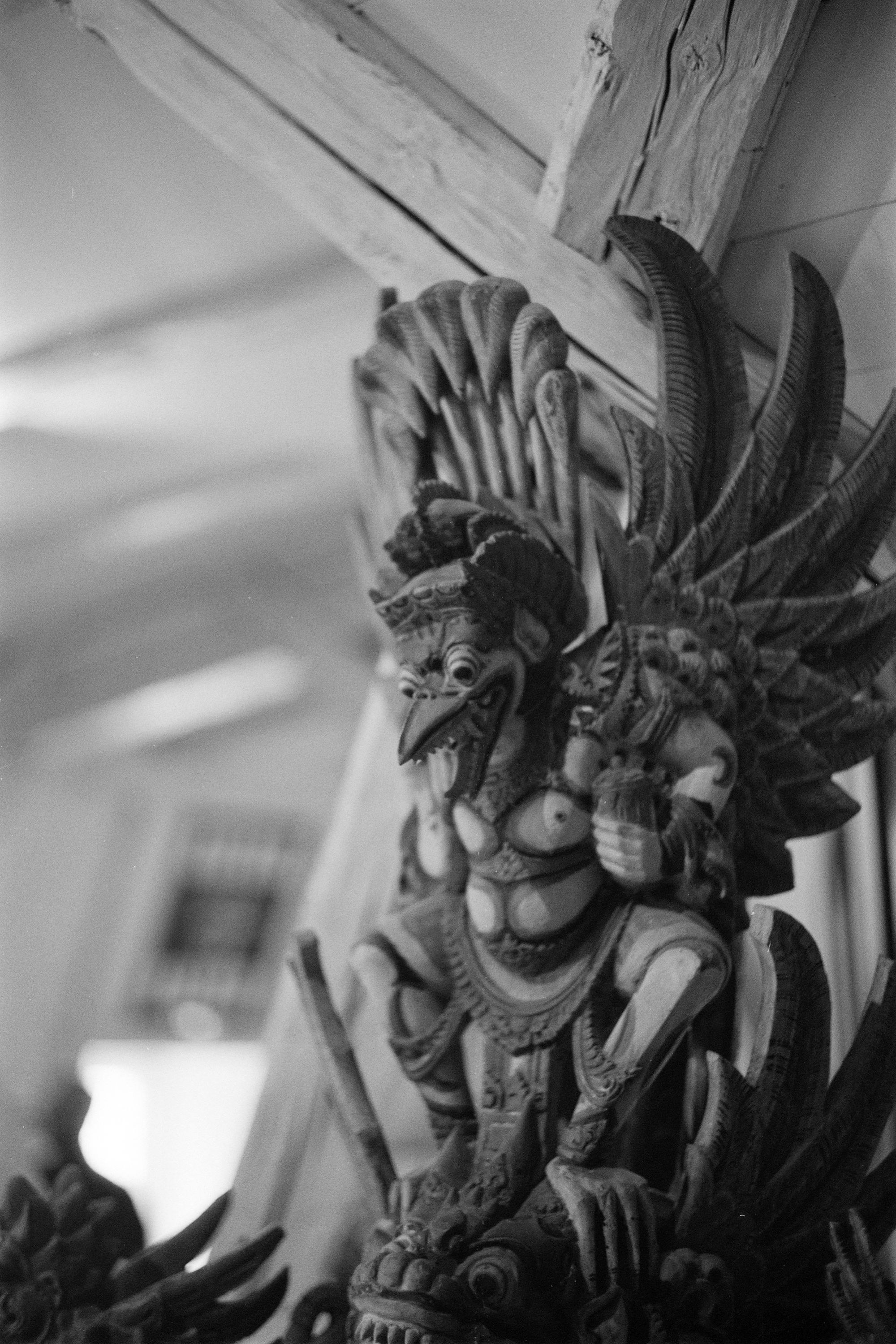
Outside the museum, under bright sunlight, no problem though!
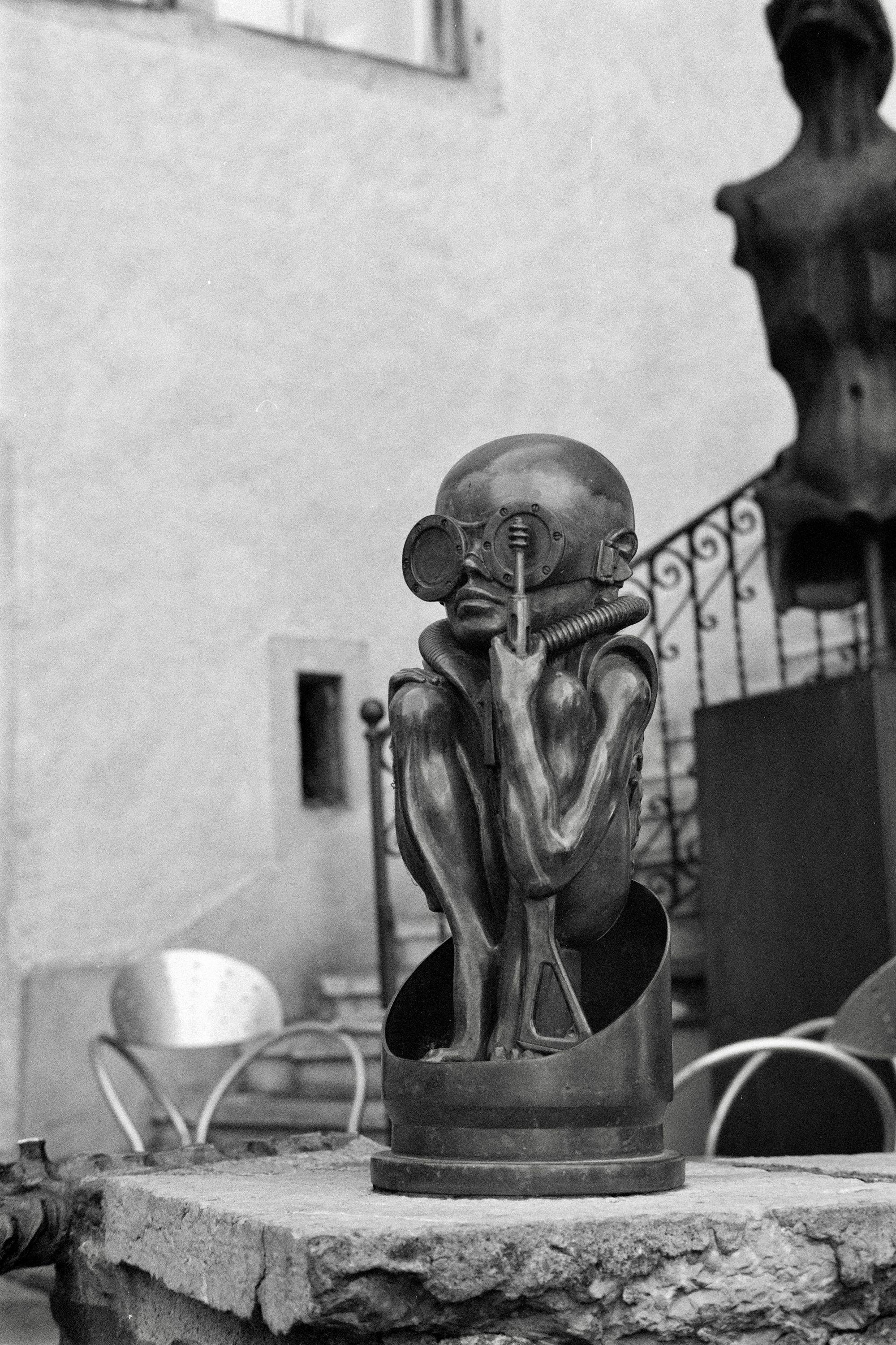
I took my camera again in Geneva to the Rath Museum. I misjugded the exposure settings and overexposed most of the shots, resulting in flat negatives. Flood lights, white walls, stone statues inside, that really messed up my perception. Everything is grey.
See for yourself:
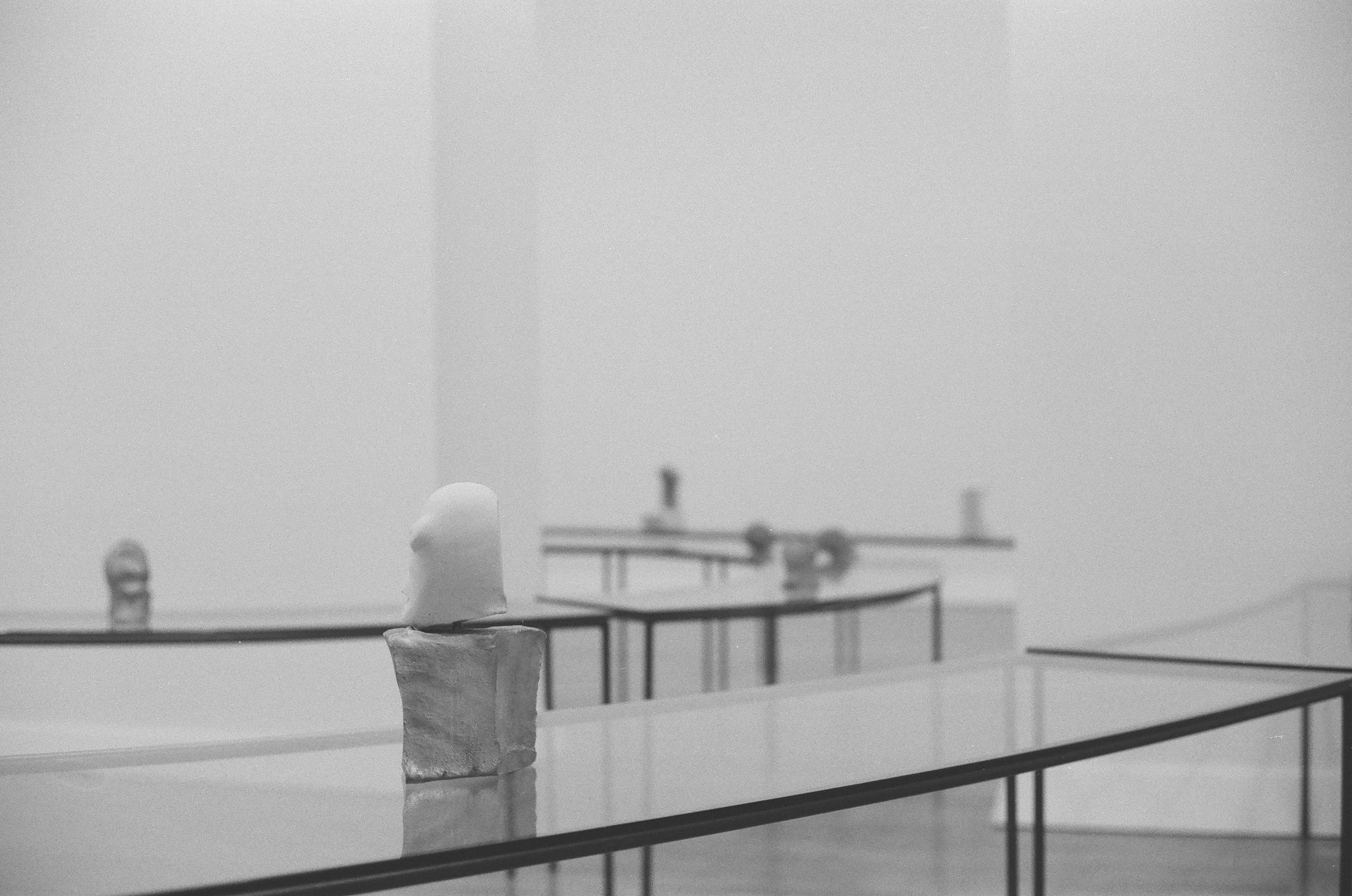

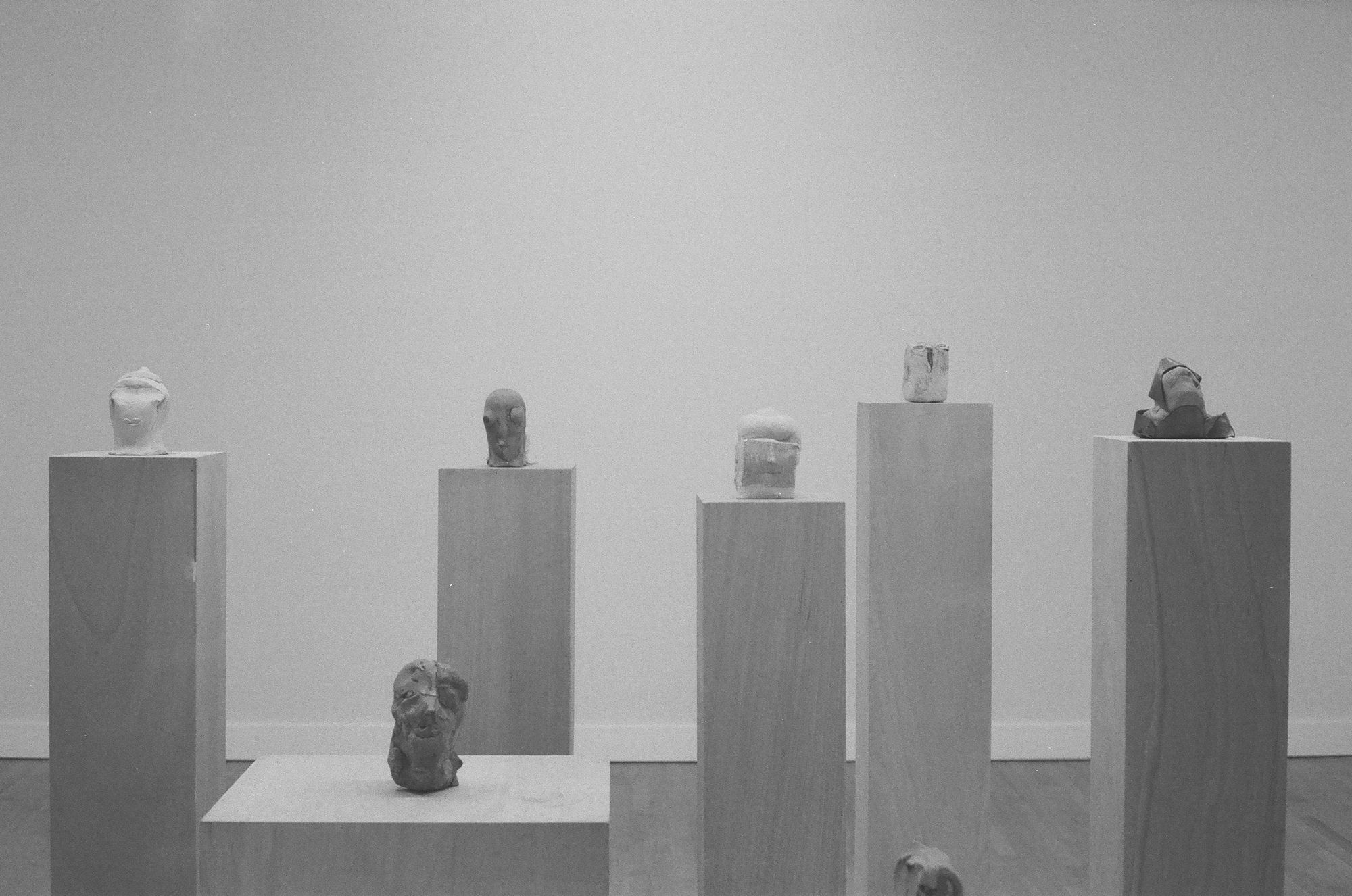

Next time I will bring a meter! Or a second camera with a meter I can trust.
